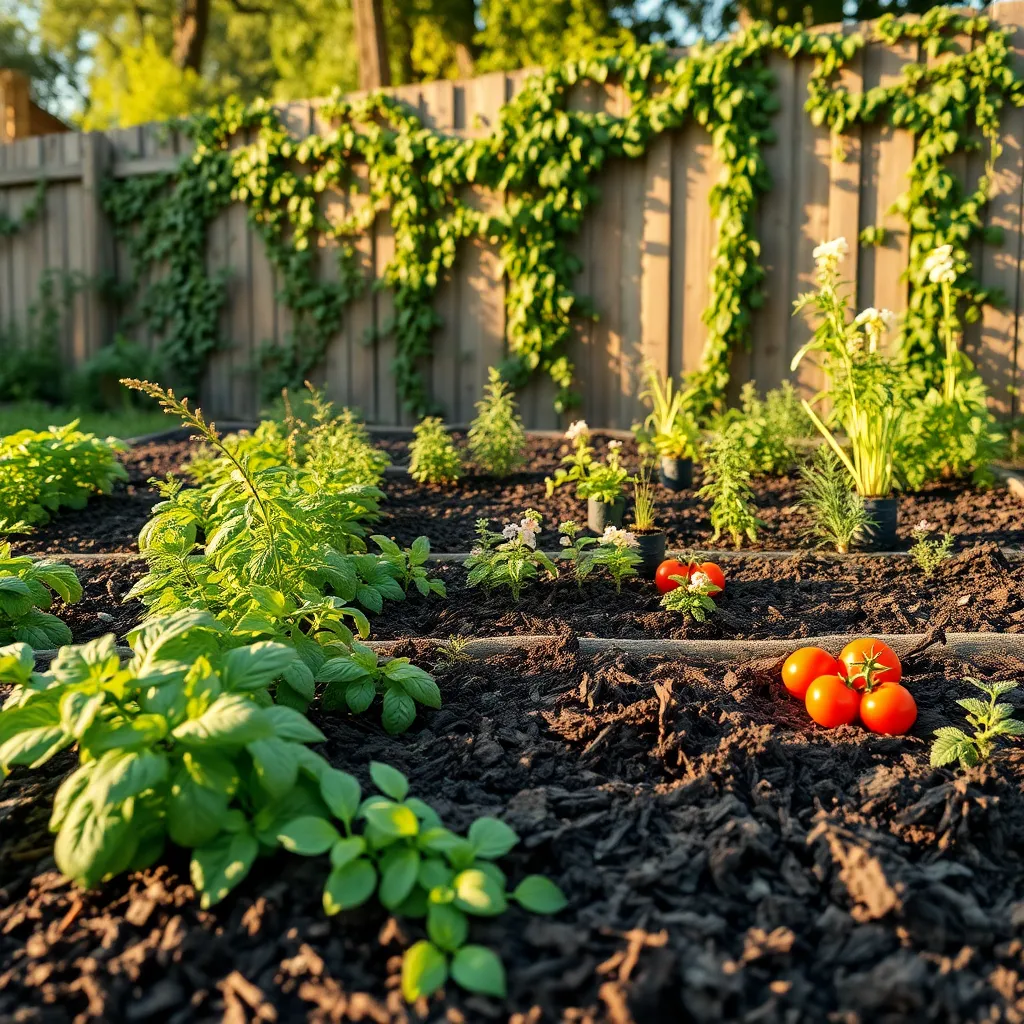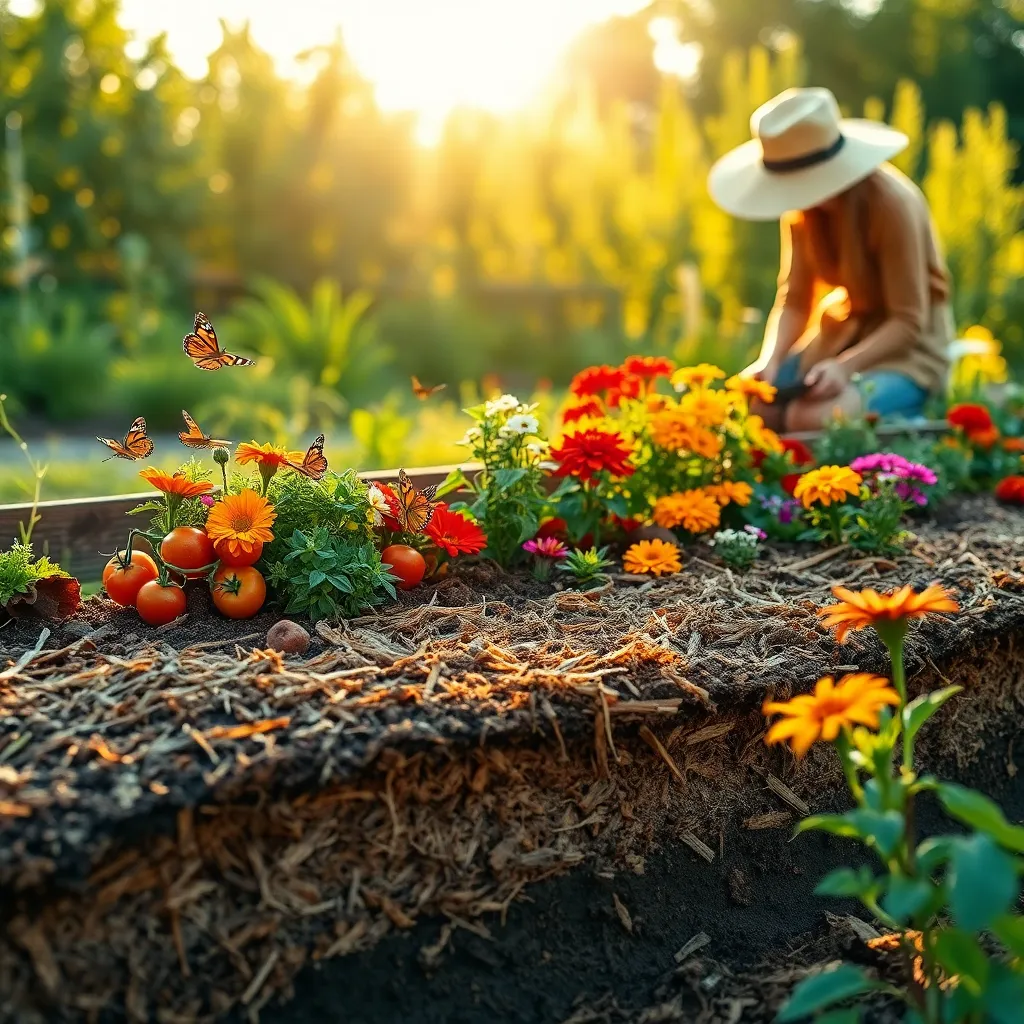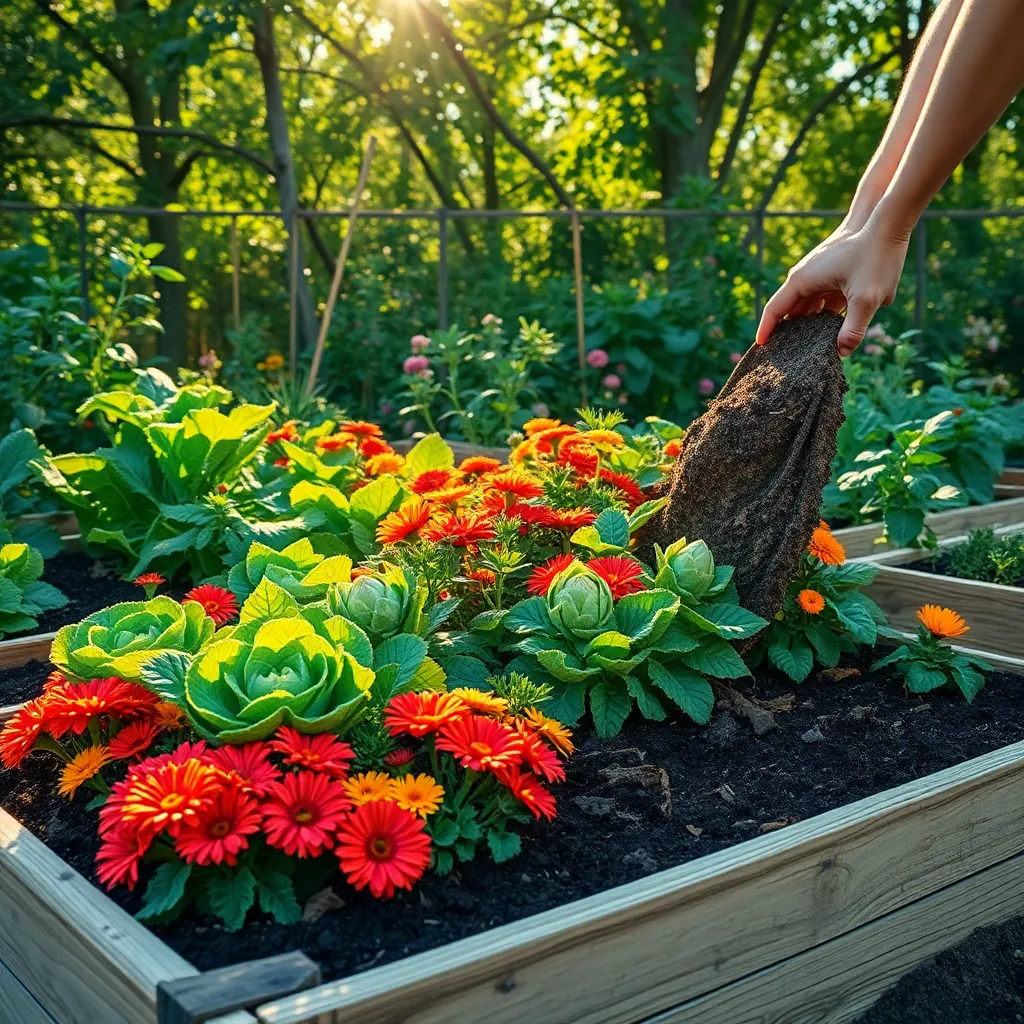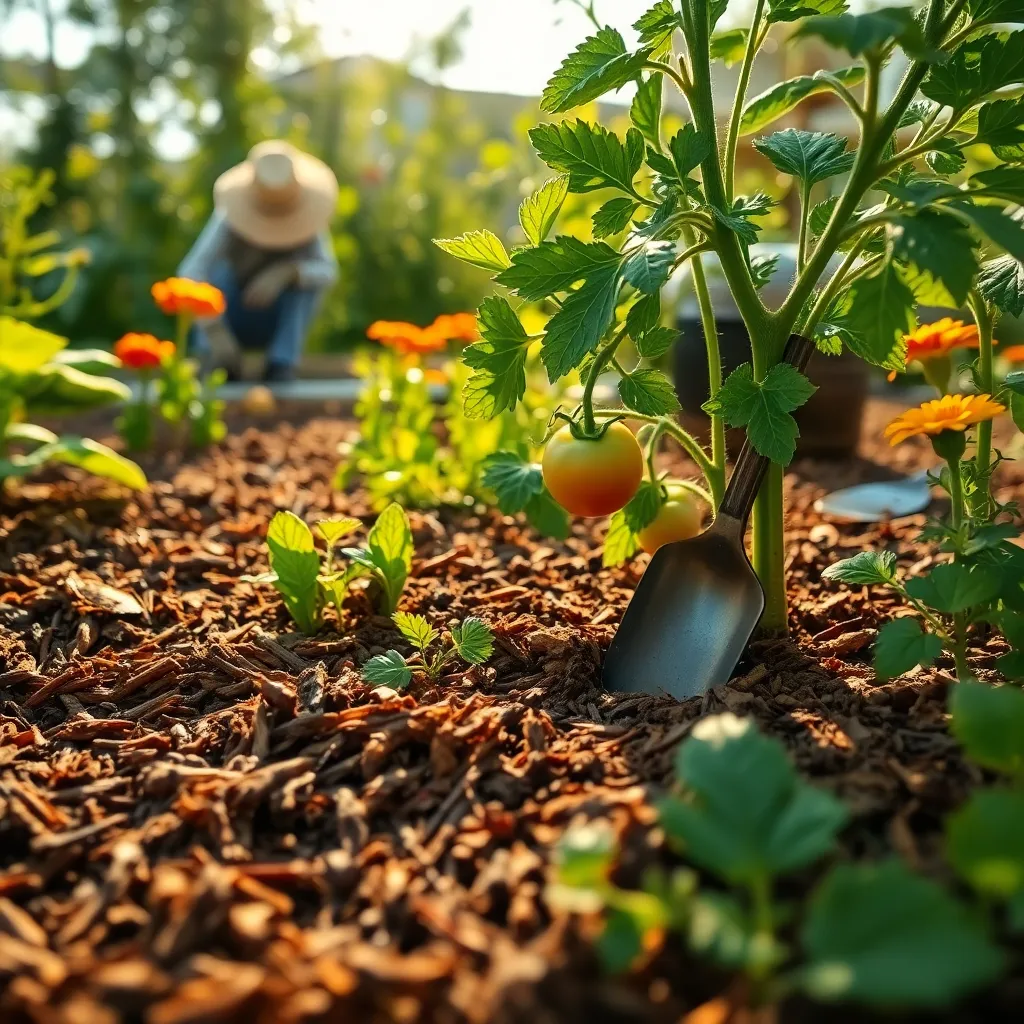Gardening is a cherished journey, one that brings the joy of nurturing life and transforming spaces into vibrant sanctuaries. Whether you’re just beginning to explore the wonders of gardening or you’re a seasoned green thumb, the no-dig gardening method offers an exciting, low-maintenance approach that might just revolutionize the way you cultivate your patch of earth. This technique is not just about easing the physical labor typically associated with gardening; it’s about creating a thriving ecosystem in your backyard by allowing nature to do the heavy lifting.
The beauty of no-dig gardening lies in its simplicity and effectiveness, making it a compelling choice for gardeners of all levels. By mimicking natural soil processes, this method reduces weed growth, preserves soil structure, and enhances the retention of moisture and nutrients. As you delve into this article, you’ll discover the fundamentals of setting up a no-dig garden, learn how to layer materials effectively, and understand the long-term benefits it holds for your plants and the environment. Prepare to embrace a gardening style that is not only kinder to your back but also to the planet, as you cultivate a flourishing garden with ease and enjoyment.
Introduction to No-Dig Gardening

No-dig gardening is a sustainable method that focuses on minimizing soil disturbance, preserving the natural soil structure, and enhancing its fertility. By avoiding traditional tilling, gardeners can maintain the complex ecosystem of soil organisms, which play a crucial role in plant health.
To start a no-dig garden, cover the ground with a thick layer of organic matter like compost or well-rotted manure. This layer should be at least 5-10 cm thick to suppress weeds effectively and provide nutrients for plants as it breaks down.
Instead of digging, simply plant directly into this top layer, ensuring plants have enough space to grow. To promote healthy root development, opt for a mix of compost and soil in planting holes, which offers a nutrient-rich environment.
Regularly replenish the organic layer as it decomposes to maintain soil health and fertility. Watering no-dig gardens is generally less frequent, as the mulch layer helps retain moisture, but ensure that the top layer remains adequately moist, especially during dry spells.
Setting Up Your No-Dig Bed

Starting a no-dig garden bed is a straightforward and rewarding process. Begin by selecting a location that receives at least six hours of sunlight daily, as most plants thrive in such conditions.
Once you’ve picked your spot, lay a thick layer of cardboard or newspaper directly onto the soil. This will help suppress weeds and create a foundation for your no-dig bed without disturbing the existing soil structure.
Next, build up layers of organic materials like compost, straw, and well-rotted manure. Aim for a total depth of at least 12 inches to provide ample nutrients and space for plant roots to explore.
Water each layer thoroughly to ensure the materials begin to decompose and integrate. This step is crucial as it helps create a rich, fertile environment for your plants to thrive in.
- Tip for beginners: Use a mix of green and brown materials, such as grass clippings and dried leaves, to balance nitrogen and carbon.
- Advanced tip: Consider adding a layer of seaweed or comfrey leaves for an extra nutrient boost.
After setting up your layers, cover the entire bed with a layer of mulch to retain moisture and prevent erosion. Organic mulches like straw or wood chips work well and will gradually break down, adding more organic matter to your bed.
Before planting, allow the bed to settle for a few weeks if possible, as this will enable the layers to break down further and create a more stable environment for your plants. This patience pays off with healthier plants and a more productive garden.
Key Benefits of No-Dig Method

The no-dig method offers several benefits that can greatly enhance your gardening experience. By minimizing soil disturbance, you help preserve the natural soil structure, which encourages beneficial organisms like earthworms to thrive.
This method also helps retain moisture, reducing the need for frequent watering. When you layer organic materials, such as compost and mulch, it forms a protective barrier that slows evaporation and keeps roots cooler.
Another advantage is the reduction of weed growth, which means less time spent on maintenance. The layers of organic material block sunlight, preventing many weed seeds from germinating and growing.
Additionally, no-dig gardening can improve soil fertility over time as organic matter breaks down and enriches the soil. For optimal results, consider using a mix of green materials like grass clippings and brown materials such as dried leaves.
Finally, this method promotes healthier plants by fostering a balanced soil ecosystem. Healthy soil leads to robust plant growth, making your garden more resilient to pests and diseases.
Maintenance Tips for No-Dig Gardens

Maintaining a no-dig garden involves regular mulching to maintain soil health and nutrient levels. Apply a fresh layer of organic mulch such as straw, wood chips, or compost to your garden bed at least once a season to replenish nutrients.
Weed control is straightforward in a no-dig garden, but it requires vigilance. Hand-pull weeds as soon as they appear, taking care not to disturb the soil structure beneath the mulch layer.
Watering is crucial, especially during dry spells, to keep your no-dig garden thriving. Use a drip irrigation system or a soaker hose to deliver water directly to the root zones, reducing evaporation and ensuring efficient water use.
For those looking for advanced maintenance techniques, consider incorporating cover crops in your off-season. Planting cover crops like clover or vetch will fix nitrogen in the soil and improve its organic matter content, enhancing fertility without disturbing the soil.
Troubleshooting Common No-Dig Issues

No-dig gardening is a fantastic way to reduce labor while promoting healthy soil, but it’s not without its challenges. One common issue is pest control, as the undisturbed soil can become an inviting environment for slugs and snails. To tackle this, consider introducing natural predators such as beetles and birds to your garden. Alternatively, placing copper tape around plant bases can deter these pests effectively.
Another issue gardeners might face is nutrient imbalance due to layering organic matter. To ensure your plants are getting the right nutrients, regularly test your soil with a home testing kit. Based on the results, amend the soil with specific fertilizers, like adding bone meal for phosphorus or seaweed extract for potassium, to address any deficiencies.
Weed growth can sometimes be a problem, even in a no-dig garden. Covering the soil with a thick layer of mulch can help suppress weeds while also retaining moisture. If weeds do appear, remove them by hand or with a hoe, ensuring you pull out the entire root to prevent regrowth.
Compaction is another issue that can arise, especially in areas with heavy foot traffic. To alleviate compaction, regularly aerate the soil by using a garden fork to gently lift and loosen the top layers. This will help improve drainage and root growth without disturbing the soil structure.
Conclusion: Growing Success with These Plants
In exploring the ‘No-Dig Gardening Method For Easy Maintenance,’ we unearthed five key relationship concepts that parallel this nurturing approach: communication as fertilizer, trust as the rich soil, patience as the slow but steady growth, adaptability to weather life’s storms, and consistent effort as the sunlight nurturing the bond. Just as a thriving garden requires thoughtful care, so too does a flourishing relationship. To kick-start this transformation, consider setting aside just 10 minutes daily to truly listen and engage with your partner, nurturing the connection with your focused presence.
Remember, this article is a treasure trove of insights that can guide you in cultivating a robust and enduring relationship. Bookmark it now for a handy reference whenever you need to refresh your relationship skills or seek a dose of encouragement.
Looking ahead, by integrating these principles into your daily interactions, you are planting the seeds for a relationship that not only withstands the test of time but blooms beautifully. You hold the power to nurture a partnership that grows stronger and more vibrant with each passing day. Start today, and watch your relationship flourish!

